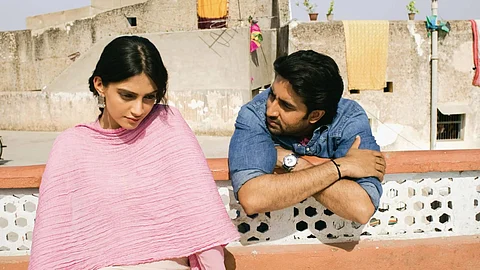
- HOMEGROWN WORLD
- #HGCREATORS
- #HGEXPLORE
- #HGVOICES
- #HGSHOP
- CAREERS
- ABOUT US
- CONTACT US

In Rakesh Omprakash Mehra's 'Delhi 6' (2009), the protagonists Roshan and Bittu fall in love through their brief encounters on Old Delhi's rooftops. In Neeraj Ghaywan's critically acclaimed directorial debut 'Masaan' (2015), Deepak and Shalu's rooftops become their shelters from their oppressive lives, where they share moments of tenderness through poetry over phone calls. In Neeraj Pandey's 2008 thriller 'A Wednesday!', the rooftop of an under-construction building becomes a common man's site of protest against the government's incompetence.
From action to romance, horror to comedy, and thriller to noir, rooftops have played the backdrop to many Indian stories on the silver screen of Hindi cinema. The rooftop in Hindi cinema is more than just an architectural element — it represents freedom from societal constraints, a space where masks fall away and real conversations begin. Across world cinema, and especially in Hindi films, filmmakers have used the humble rooftop as a crucial visual and narrative device that reflects the cultural, emotional, and socio-political atmospheres of its respective contexts. In the crowded, chaotic, and often emotionally charged world of Indian cities, rooftops serve as rare open-air spaces of solitude, self-expression, romance, and resistance. They are living, breathing extensions of homes — porous, democratic, and full of possibility.
These rooftops are not just personal spaces — they are shared spaces where families bond, lovers court each other, and communities gather. They act as bridges between private domestic life and the public world, mirroring the fluid boundaries of Indian social life. But as humble family homes give way to sky-scraping apartment buildings, the vanishing of accessible rooftops and terraces point to a more than logistical shift. Their disappearance reflects a deeper cultural decay: a society — and by extension, a cinematic culture — growing more claustrophobic, conservative, and risk-averse. Once Hindi films used to soar on these vibrant stages for love, defiance, and transformation, but today they stumble through visually sterile and often soulless interior sets and sound stages. The shift affects not just visual aesthetics but storytelling itself — limiting the open-air metaphors of freedom, vulnerability, and connection that rooftops so naturally provided.
This is not just an aesthetic loss — it’s a symptom of a deeper narrative and existential crisis. Rooftops in Hindi films symbolised escape, intimacy, and rebellion against a rigid social order. But as cities lose their rooftops and terraces and Indian society becomes more conservative and cloistered, Hindi cinema risks losing one of its most resonant spatial symbols; a space where personal and political dramas could unfold above the noise of a divided, inward-looking city. This could force filmmakers to seek new landscapes for intimacy and rebellion or reimagine what it means to rise above, both literally and metaphorically, in a rapidly vertical, and often isolated urban India.
